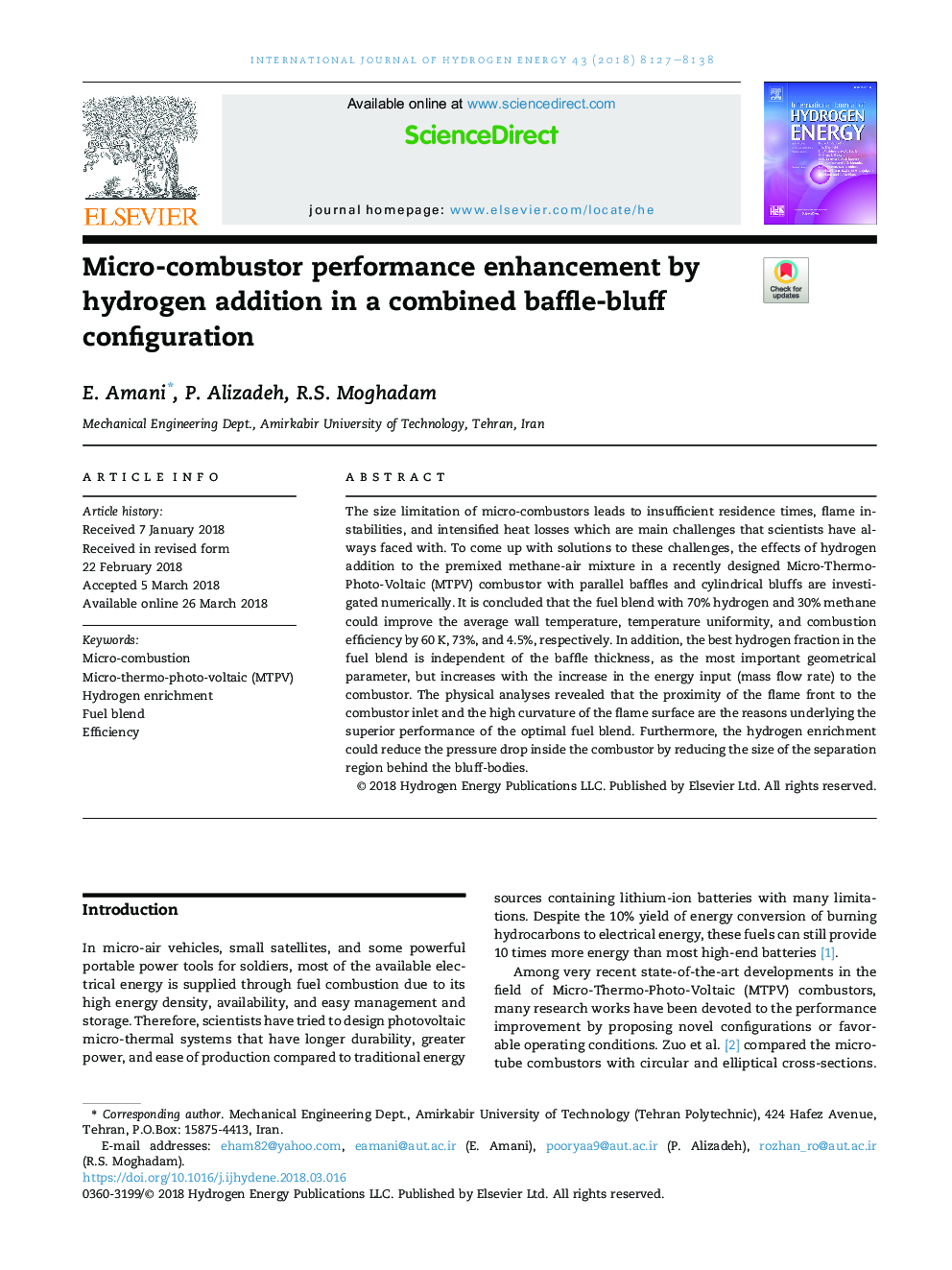| Article ID | Journal | Published Year | Pages | File Type |
|---|---|---|---|---|
| 7706478 | International Journal of Hydrogen Energy | 2018 | 12 Pages |
Abstract
The size limitation of micro-combustors leads to insufficient residence times, flame instabilities, and intensified heat losses which are main challenges that scientists have always faced with. To come up with solutions to these challenges, the effects of hydrogen addition to the premixed methane-air mixture in a recently designed Micro-Thermo-Photo-Voltaic (MTPV) combustor with parallel baffles and cylindrical bluffs are investigated numerically. It is concluded that the fuel blend with 70% hydrogen and 30% methane could improve the average wall temperature, temperature uniformity, and combustion efficiency by 60Â K, 73%, and 4.5%, respectively. In addition, the best hydrogen fraction in the fuel blend is independent of the baffle thickness, as the most important geometrical parameter, but increases with the increase in the energy input (mass flow rate) to the combustor. The physical analyses revealed that the proximity of the flame front to the combustor inlet and the high curvature of the flame surface are the reasons underlying the superior performance of the optimal fuel blend. Furthermore, the hydrogen enrichment could reduce the pressure drop inside the combustor by reducing the size of the separation region behind the bluff-bodies.
Related Topics
Physical Sciences and Engineering
Chemistry
Electrochemistry
Authors
E. Amani, P. Alizadeh, R.S. Moghadam,
